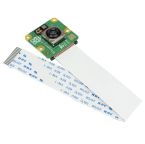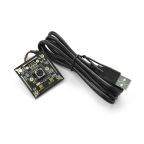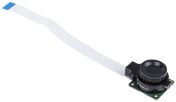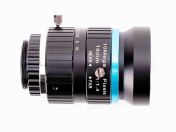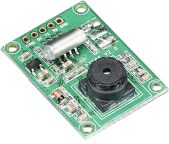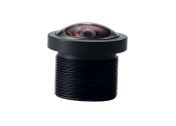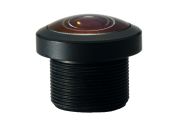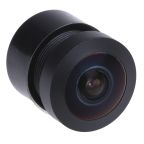Raspberry Pi Cameras
Camera modules are accessories that can be installed onto a Raspberry Pi computer to capture high-quality HD video and still photographs. The camera modules contain image sensors with an integrated lens, control electronics, and an interface. RS offer a range of high-quality Raspberry Pi cameras including the new official camera module that can capture images up to 12 megapixels! We also have infrared cameras to capture HD video and images at night - an ideal option to use in a Raspberry Pi CCTV system. Additionally, we have a choice of easy to mount interchangeable lenses that will allow you to take shots at different angles, going all the way up to a 220º wide-angle lens.
How do I connect my Pi camera module?
Connecting your Pi camera module is very quick and easy. It can be completed by following these 4 simple steps.Locate the special camera modular connector on the board, it is positioned between the Ethernet and the HDMI ports.Carefully lift the edges of the connector ports plastic clip.Insert the ribbon cable making sure the exposed pins are facing the right way around. (the blue part of the ribbon cable facing the Ethernet port and the exposed pins facing the HDMI port.Once the ribbon cable is inserted correctly the plastic clip can be pushed back into place securely connecting your module to the single-board computer.
What are the different types of Raspberry Pi camera modules?
There are two versions of the Raspberry Pi camera module available. The standard version which is designed to take pictures in normal light conditions and the NoIR version which does not have an IR filter. The NoIR modules with the Sony IMX219 image sensor can be used in conjunction with an infrared light source which allows you to take images in low-light conditions or even the dark.
Why should I use a Raspberry Pi camera?
Camera boards are great fun, they are used for any camera-based project such as making a stop-motion film, capturing wildlife at night or building a motion detector. The Camera module V2 is great for filming in light, it has an 8-megapixel image sensor and can reduce image contamination such as fixed noise and smearing. Camera modules feature a variety of control functions that include white balance and luminance detection, as well as exposure control. Other benefits range from high-quality imagery to high data capability. They are ideal for all video creation, including time-lapse and slow-motion because they are small and demand low power input.
13 Products showing for Raspberry Pi Cameras
Popular Searches
Related links
- Raspberry Pi CSI-2 with 3280 x 2464 pixels Resolution
- Raspberry Pi , CSI-2 with 12 Megapixels Resolution
- OKW Enclosures Case for use with Raspberry Pi Camera, Raspberry Pi NoIR Camera in Transparent
- DesignSpark, Camera Lens Interchangeable Lens
- Okdo CSI-2 with 2592 x 1944 Resolution
- Raspberry Pi Camera Module , CSI-2 with 3280 x 2464 pixels Resolution
- OKW Enclosures Case for use with Raspberry Pi Camera, Raspberry Pi NoIR Camera in Black
- Raspberry Pi Cases
